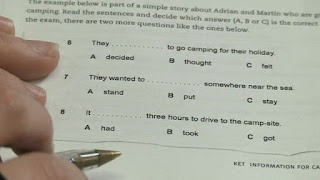Interesting case study: Spouse visa for a New Zealand spouse of a dual British/Irish citizen who tried to apply under EEA law but was refused because of the changes in the EEA Regulations on dual nationals.
This
was a very interesting case! This couple came to us for a advice, following a
refusal of an application for an EEA Residence Card. The applicant is from New
Zealand and the Sponsor is a dual British/Irish national. The application was
made in early 2014, ie after the changes in the EEA Regulations for dual UK/EU
nationals (which happened on 16 July 2012).
Before
16 July 2012 dual UK/EU nationals could simply choose whether to use their British
nationality to bring their non-EU spouses to the UK and apply under the
Immigration Rules. Or to use EEA nationality (non-UK) and apply under the EEA
Regulations. Before 9 July 2012, when Appendix FM came in force, it did make
sense to use the Immigration Rules because a foreign spouse could have an ILR
just after 2 years. From 9 July 2012 there is a strict Financial Requirement as
well as a qualifying period for an ILR now being 5 years.
So,
the Immigration Rules were changed on 9 July 2012 while EEA Regulations were
changed shortly after – on 16 July 2012. At the moment it is way more
advantageous to use the EEA route: no Financial Requirement, no English, a
Residence Card is for the whole 5 years (not 2.5+2.5) and the cost is so much
lower. So, the option of a ‘choice’ has now been stopped, save for Transitional
Arrangements (which are not a matter of this course).
So,
the New Zealander wife came to the UK as a visitor, got her 6 months stamp on
arrival and then applied for a Residence Card on EEA2 form. The application was
(rightly) refused. The Irish/British spouse has not qualified under the
Surinder Singh route, ie he had not worked in Ireland or another EU member
state immediately before returning to the UK (in fact he has never worked in Ireland),
so the spouse could not benefit from the EU law. This is when the couple came
to us for an advice.
We
explained about the changes for dual nationals and advised to return to New
Zealand and apply for an Entry Clearance as a Spouse of a UK citizen under the
Appendix FM. Unless of course they choose to go and live in another EU member
state first, with the British national working or being self-employed there,
and then come back. Initially, the clients were very keen on appeal and
generally, on ‘fighting the system’, including trying to claim insurmountable
circumstances and using EX.1 and EX.2 paragraphs under the Appendix FM. In the end, they
decided to apply for an Entry Clearance.
Once
we were following the Rules in Appendix FM, the applicant was within the Rules
and the case became straightforward. Even the Financial Requirement was
straightforward because the Sponsor has already worked in the UK for 6 months
for the same employer while the spouse was waiting for the outcome of the
Residence Card application. The application was submitted using Priory service
in New Zealand and was approved after just 1 week.
For those interested in the Surinder Singh route please visit our earlier post: http://1st4immigration-visas.blogspot.co.uk/2014/10/surinder-singh-route-for-spouses-and.html
or visit our website page: http://www.1st4immigration.com/surinder-singh-route.php
Also, there are some transitional arrangements for dual nationals, which can be summed up as applicable to those who had a document confirming a right to reside in the UK on 16 July and 16 October 2012 and to those who had achieved a status of a permanent resident before 16 July 2012.
For an individual advice or to make your application as successful please contact us: info@1st4immigration.com , we reply on the same working day. Or visit www.1st4immigration.com
For an individual advice or to make your application as successful please contact us: info@1st4immigration.com , we reply on the same working day. Or visit www.1st4immigration.com
If you are an Immigration Adviser or a Solicitor please visit our immigration Training and CPD website: www.1st4immigration.com/training

